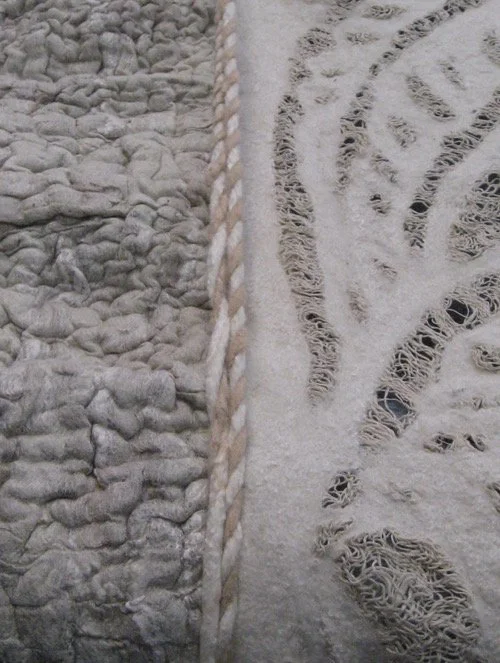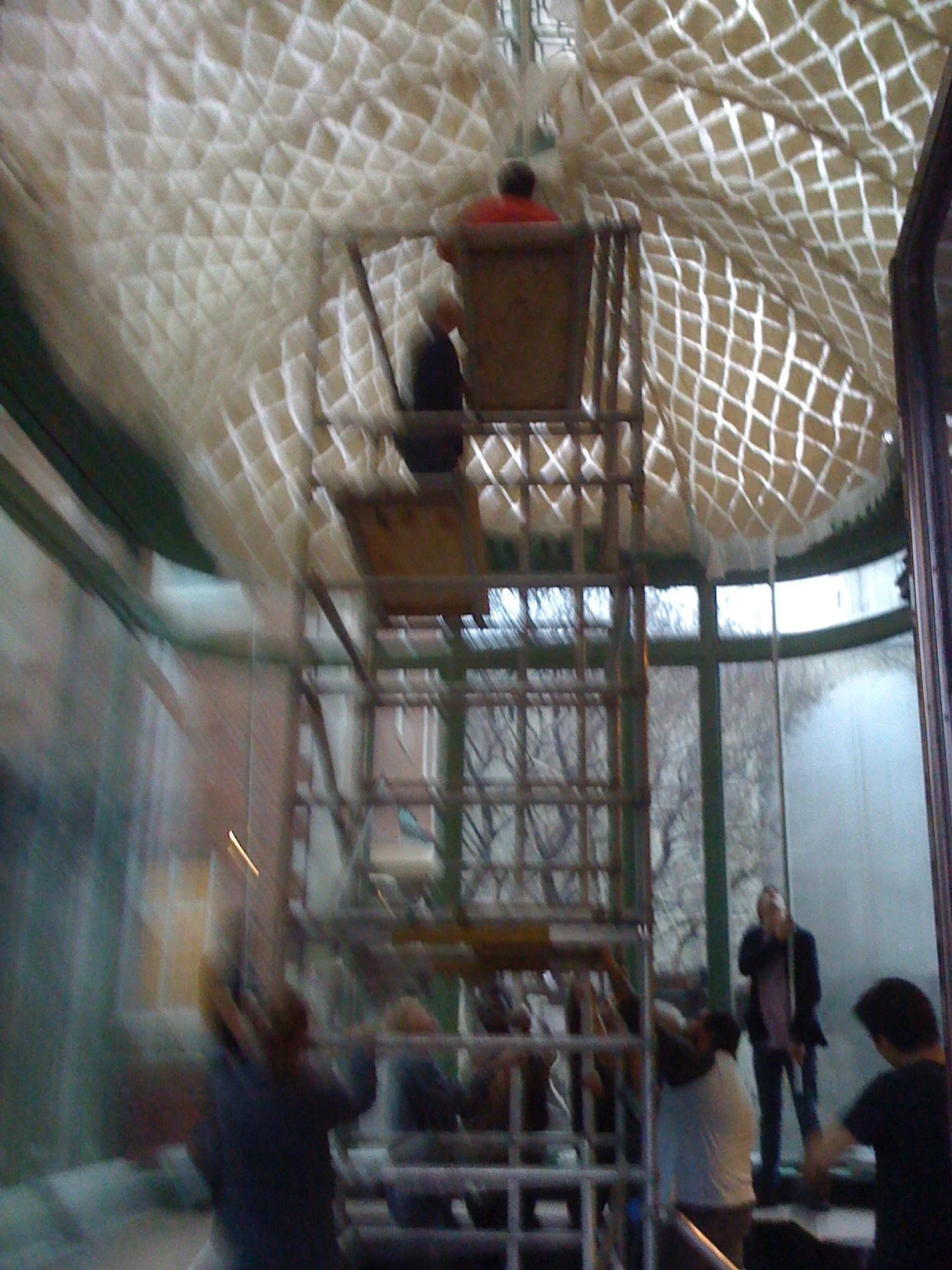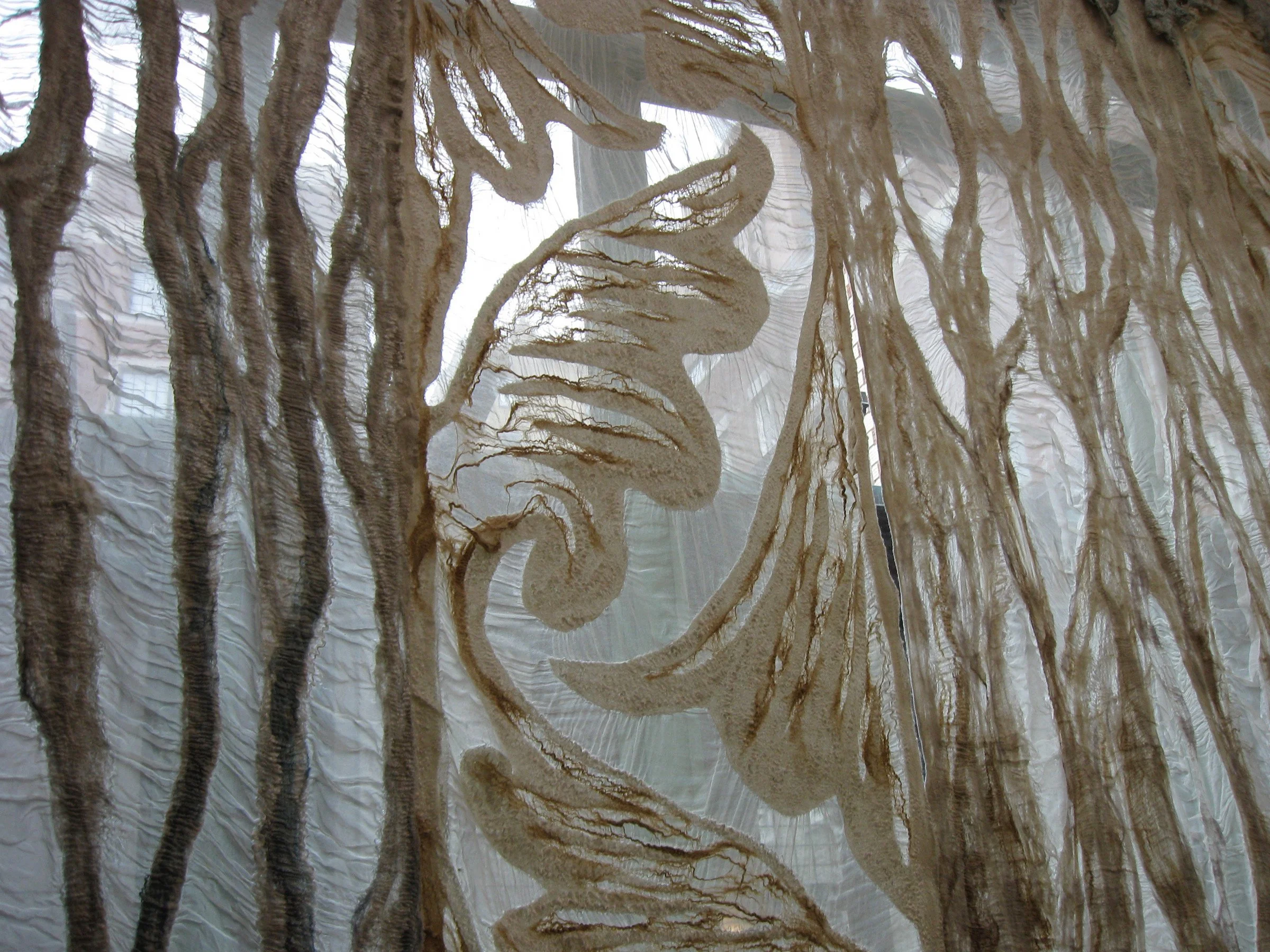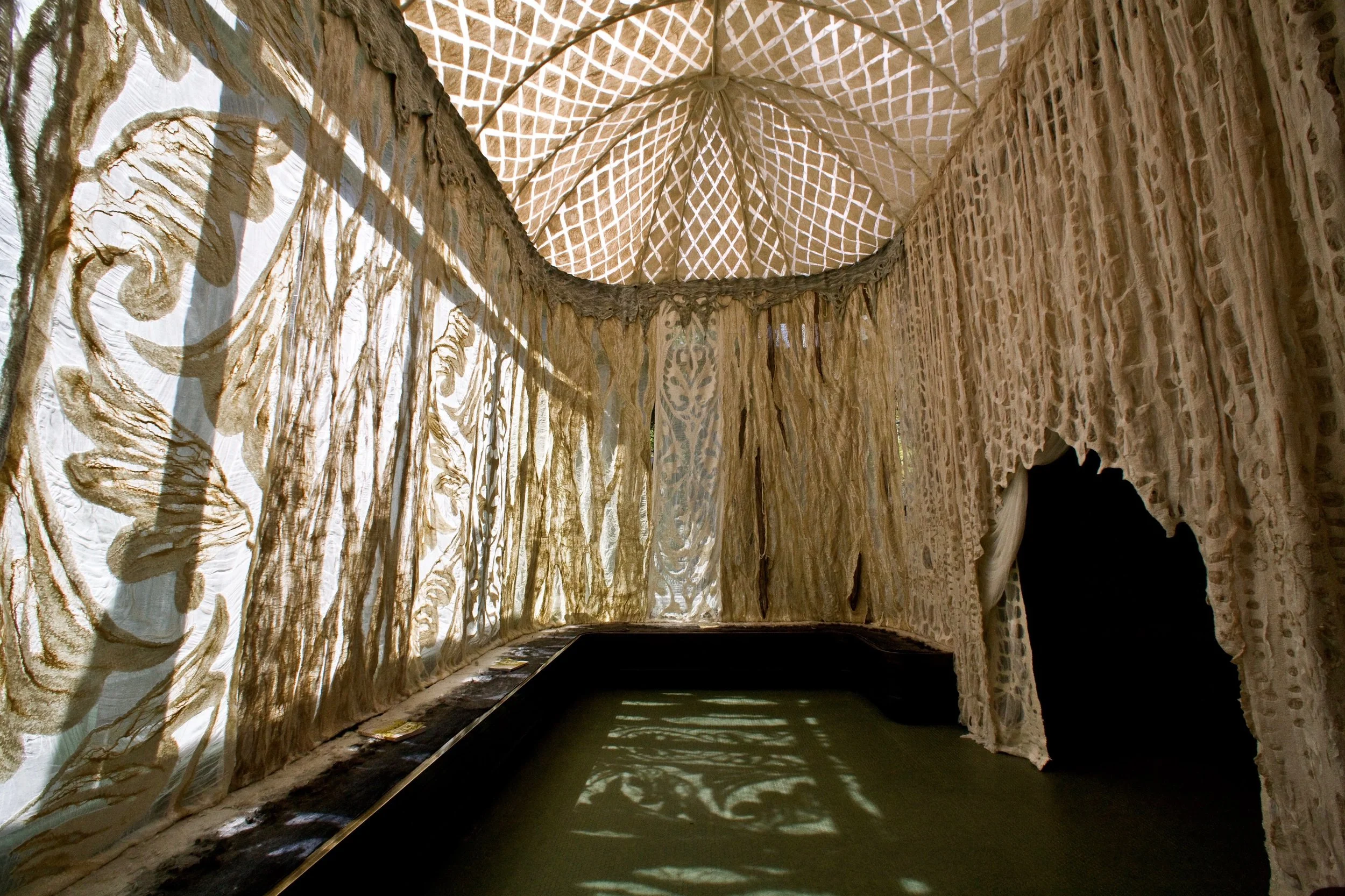PC: Fred Conrad, NY Times, 2009
New york city, ny, 2009
The yurt, a tent-like, collapsible dwelling covered with Felt, has been home to generations of Turkic-Mongolian tribes for thousands of years. During research trips to Central Asia and Mongolia, Arnold was inspired by the Indigenous artisans and their methods of making this ancient textile as well as the rituals, culture, and philosophies it embodies. She was also intrigued by tales of Genghis Khan, whose yurts (ger) were used for their portability, allowing the royal court to travel with their leaders on military campaigns, and were said to hold over 1000 men.
A Palace Yurt is defined in traditional Mongolian culture as a lavishly decorated yurt, elaborate in ornamentation and design. It has also been called a castle, a royal tent, and a palace abroad. It was known as a place of grandeur and celebration, “as a traditional environment for all artistic activities (song, dance, epic poetry, and legends) and a majority of ritual festivities.” (Dr. Batchuluun, Felt Art of the Mongols, 2003)
The Conservatory, quite literally a very grand Glass House within the Carnegie Mansion, shares many architectural details in form and style with the Palace Yurt. It seemed only fitting that the Fashioning FELT exhibition demonstrate the link between the historical origins of Felt and contemporary Felt art through the symbolism of the Palace Yurt, thus synthesizing the past with the present. Arnold proposed lining the space with handmade Felt she specifically designed and created as an immersive experience to honor the origins and demonstrate the dramatic range of textures, densities and thicknesses this art form can achieve.
The Palace Yurt was the centerpiece of the Fashioning FELT exhibition at the Cooper-Hewitt, Smithsonian Design Museum in 2009. The door of the Palace Yurt (measuring approx. 15’ H x 5’ W) is now part of the museum’s permanent collection and can be viewed here, along with additional historical information.















